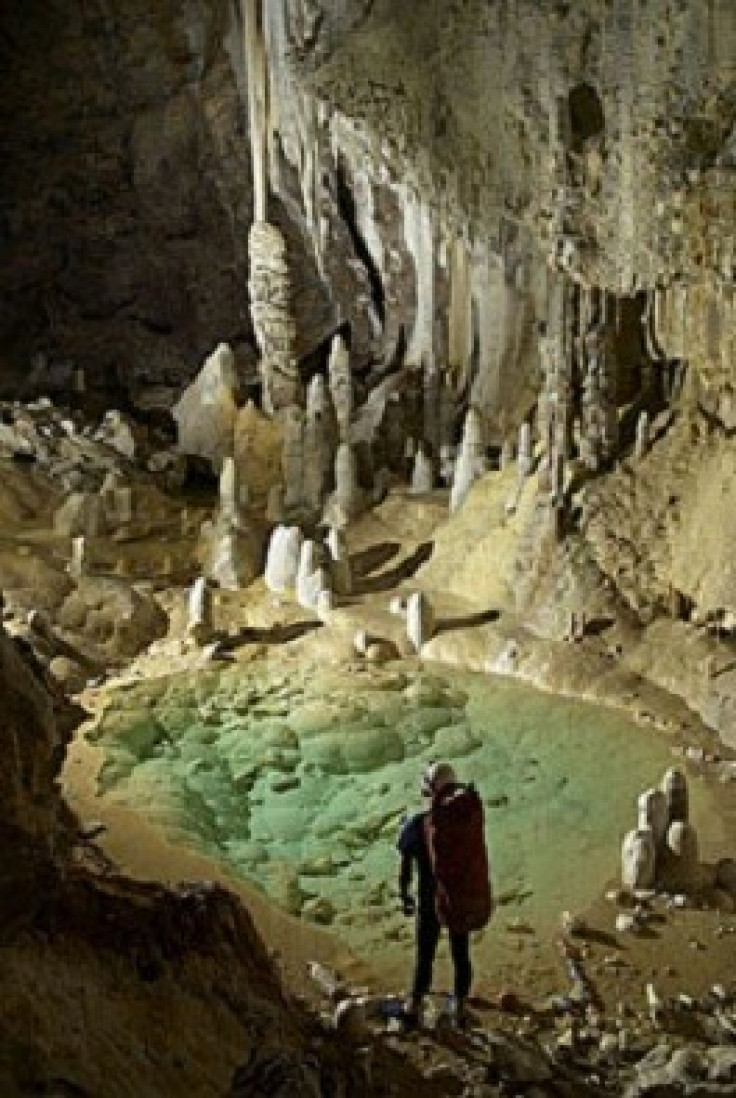Antibiotic-Resistant Bacteria Found In Ancient Cave

Superbugs -- deadly bacteria that resist even the strongest antibiotics -- have long scared scientists, who worry that overuse of antibiotics could lead to bacteria so strong a scraped knee could be deadly. But according to a new study, antibiotic-resistant bacteria aren't a new phenomenon -- they've actually been around for millions of years.
It's been an uphill battle for scientists, according to the study. Antibiotic-resistance continues to be found in different strains of bacteria, such as tuberculosis, gonorrhea and strep, and researchers haven't made any real strides in combating the bacteria's evolution.
Clinical microbiologists have been perplexed for the longest time, Gerry Wright, lead researcher and chemical biologist at McMaster University in Hamilton, Ontario told National Geographic. When you bring a new antibiotic into the hospital, resistance inevitably appears shortly thereafter, within months to years. It's still a big question: 'Where is this coming from?' Almost no one thought to look at other bacteria, the ones that don't necessarily cause disease.
Researchers ventured into Carlsbad Cavern in New Mexico, a 4-million-year-old cave. More than 1,600 feet (500 meters) deep in the cave where few, if any, humans had ever been before, they found almost 100 different types of bacteria. They tested 26 different antibiotics on the bacteria and found that 70 percent were able to resist up to four types of antibiotics, including synthetic drugs. One type of bacteria resisted 14 different antibiotics.
It's awe-inspiring, Wright told the Los Angeles Times. It gives you real respect for the genetic diversity and the ability of these organisms to evade toxic molecules.
The findings suggest antibiotic resistance is a natural process hard wired into the microbial genome, researchers wrote. While they can't be sure how the resistance came about, it's possible it came via mutations during sexual reproduction or through a transfer from a virus.
Stuart Levy, a physician and microbiologist at Tufts Medical School, who wasn't involved in the study, told National Geographic that it's a chicken and egg issue.
Did microbes generate the antibiotics down there, then resistance developed, or is it the other way around? he said. The cave bacteria, the thinking goes, may generate natural antibiotics during 'chemical warfare' with their microbial competition.
If the bacteria are naturally generating antibiotics, it's possible there are drugs just waiting to be discovered, the researchers wrote.
The diversity in the [antibiotic-resistant bacteria] also suggests that there are a myriad of bioactive molecules with antibiotic properties waiting to be discovered, they wrote. Some of these may have the potential to be productive leads as antibiotics or as improved scaffolds that can evade existing clinical resistance.
This study doesn't negate other research that shows antibiotic overuse contributes to bacteria resistance, the researchers wrote. Instead, it underscores the need to be more careful about antibiotic use.
The biggest contributor to bacteria's drug resistance is the over-prescription of antibiotics, according to the Centers for Disease Control in Atlanta. Antibiotics are frequently prescribed for viruses, simply because healthcare providers think patients expect them. The common cold is the most common reason antibiotics are prescribed, despite the fact that antibiotics don't affect viruses.
This fact further underlines the importance of the judicious use of antibiotics to avoid selection of existing resistance elements and their subsequent mobilization through microbial communities, thereby limiting the effectiveness of these drugs to treat infectious diseases, the researchers wrote.
Antibiotics work by killing susceptible bacteria, but some microbes can survive because of an ability to neutralize or avoid an antibiotic. Resistant strains, either naturally or through mutations, survive, multiply and replace bacteria destroyed by antibiotics.
To reduce the amount of antibiotics used, the U.S. Food and Drug Administration recently instituted measures to reduce the amount of antibiotics farmers use in livestock.
The FDA believes that using medically important antimicrobial drugs to increase production in food-producing animals is not a judicious use, it said in a statement. The goal of the strategy is to protect public health and help curb the development of antimicrobial resistance and in turn help to reduce the number of infections in humans that are difficult to treat because existing antibiotics have become ineffective.
The journal PLoS ONE published the study on Wednesday.
© Copyright IBTimes 2024. All rights reserved.











